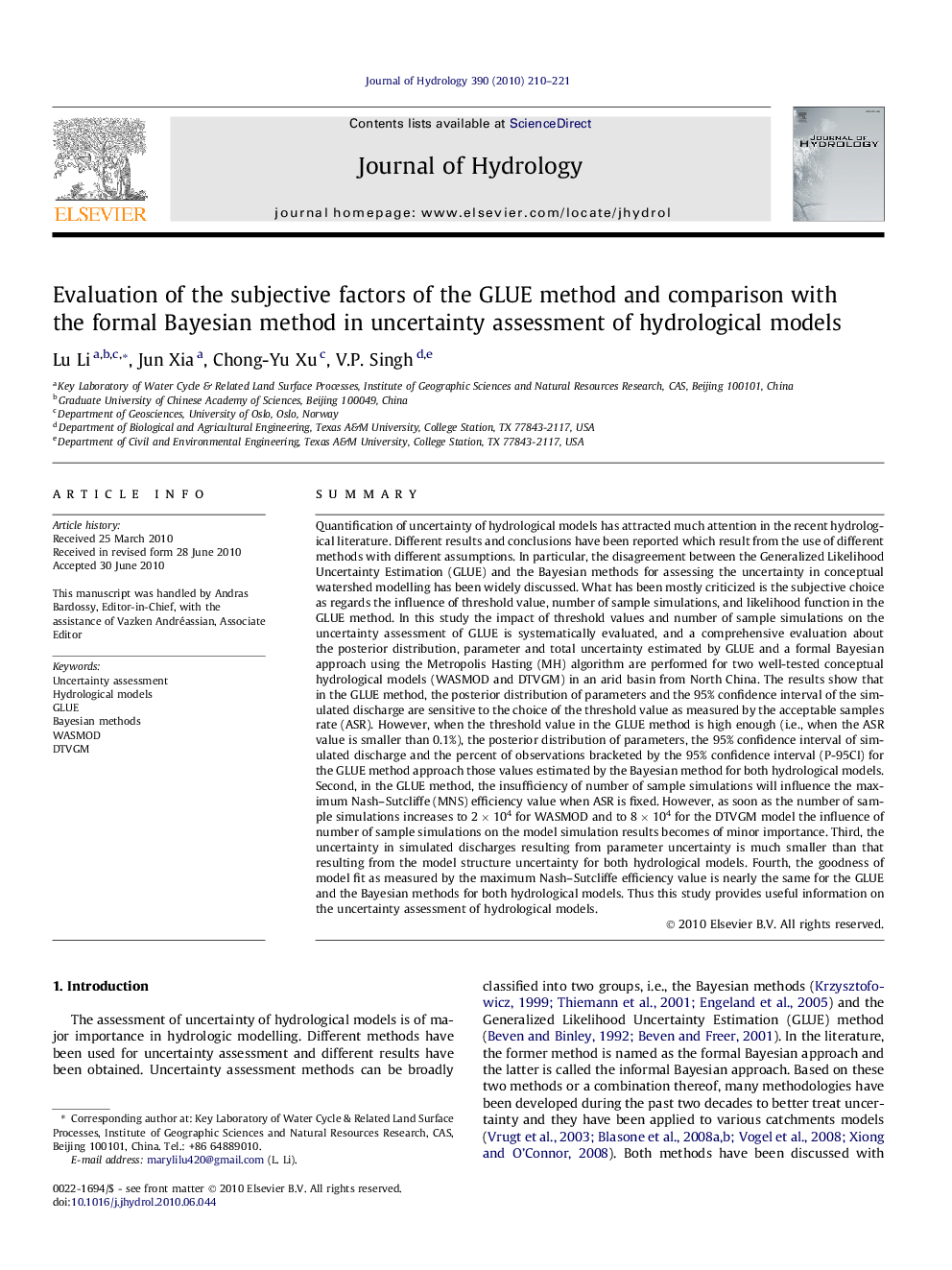| Article ID | Journal | Published Year | Pages | File Type |
|---|---|---|---|---|
| 4578037 | Journal of Hydrology | 2010 | 12 Pages |
SummaryQuantification of uncertainty of hydrological models has attracted much attention in the recent hydrological literature. Different results and conclusions have been reported which result from the use of different methods with different assumptions. In particular, the disagreement between the Generalized Likelihood Uncertainty Estimation (GLUE) and the Bayesian methods for assessing the uncertainty in conceptual watershed modelling has been widely discussed. What has been mostly criticized is the subjective choice as regards the influence of threshold value, number of sample simulations, and likelihood function in the GLUE method. In this study the impact of threshold values and number of sample simulations on the uncertainty assessment of GLUE is systematically evaluated, and a comprehensive evaluation about the posterior distribution, parameter and total uncertainty estimated by GLUE and a formal Bayesian approach using the Metropolis Hasting (MH) algorithm are performed for two well-tested conceptual hydrological models (WASMOD and DTVGM) in an arid basin from North China. The results show that in the GLUE method, the posterior distribution of parameters and the 95% confidence interval of the simulated discharge are sensitive to the choice of the threshold value as measured by the acceptable samples rate (ASR). However, when the threshold value in the GLUE method is high enough (i.e., when the ASR value is smaller than 0.1%), the posterior distribution of parameters, the 95% confidence interval of simulated discharge and the percent of observations bracketed by the 95% confidence interval (P-95CI) for the GLUE method approach those values estimated by the Bayesian method for both hydrological models. Second, in the GLUE method, the insufficiency of number of sample simulations will influence the maximum Nash–Sutcliffe (MNS) efficiency value when ASR is fixed. However, as soon as the number of sample simulations increases to 2 × 104 for WASMOD and to 8 × 104 for the DTVGM model the influence of number of sample simulations on the model simulation results becomes of minor importance. Third, the uncertainty in simulated discharges resulting from parameter uncertainty is much smaller than that resulting from the model structure uncertainty for both hydrological models. Fourth, the goodness of model fit as measured by the maximum Nash–Sutcliffe efficiency value is nearly the same for the GLUE and the Bayesian methods for both hydrological models. Thus this study provides useful information on the uncertainty assessment of hydrological models.
